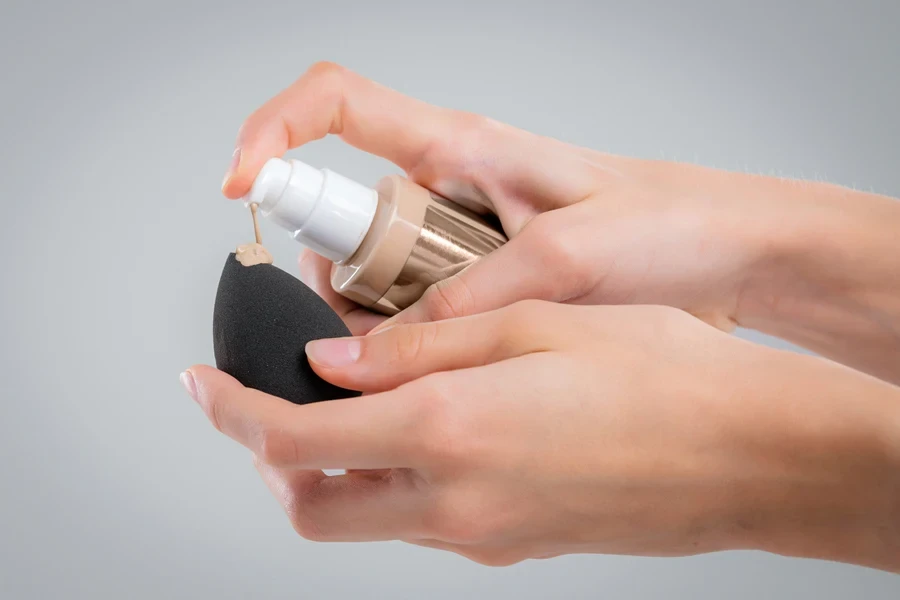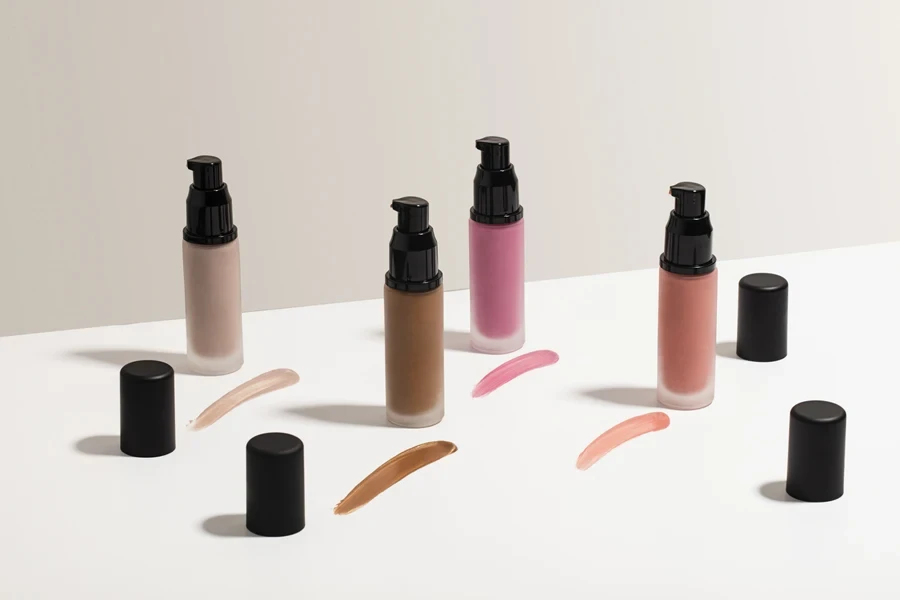Who doesn’t love a full-coverage glam? However, many agree that sometimes, lighter feels better, especially when they want that natural glowy look. That’s where skin tints come in. They’re like a softer, easier version of foundation, giving the skin a fresh finish without the heaviness.
Many options contain skin-loving ingredients like hyaluronic acid, squalane, and niacinamide, which do double duty by nourishing the skin and providing an even, lightweight base for makeup. Some even include SPF, a big bonus for anyone looking for that extra sun protection.
While skin tints are super lightweight, easy on the skin, and have a sheer, buildable finish, one may still wonder how they compare to traditional foundation. Keep reading to discover the key differences and why consumers may choose a skin tint over a conventional foundation.
Table of Contents
What is a skin tint?
What to consider when choosing between skin tints and foundation
1. Coverage
2. Wear time
3. Finish
4. Skin benefits
5. Application
6. Skin type
What consumers consider before choosing skin tint shades
1. Know their undertone
2. Match to the neck
3. Check in natural light
Wrapping up
What is a skin tint?

Skin tint is a light, breathable makeup product that lets the user’s natural skin shine while providing coverage. It’s perfect for consumers who want a more natural, glowing look without the feel of heavy foundation.
What makes skin tints even better is that they often include good ingredients for the skin. Consumers will find things like niacinamide, which helps brighten and smoothen the skin, hyaluronic acid to keep it hydrated, and beta-glucan to calm and soothe irritation.
So, it’s a product that cares for the skin while making it look great. Skin tints are also great all-in-one products that help even out the skin tone, smooth over small imperfections, and leave the skin with a fresh, dewy glow—all without feeling thick or heavy.
What to consider when choosing between skin tints and foundation
Deciding between a skin tint and foundation depends on the coverage consumers want, their skin type, and the finish they like. While both options can help even out the skin and boost the overall look, they do it differently. Here’s a closer look at what to consider:
1. Coverage

Consumers first consider coverage when choosing between skin tints and foundations. Skin tints are a great choice for light, natural-looking, or medium coverage. As mentioned, they let the user’s real skin show while gently smoothing out uneven tones or small imperfections, making them perfect for low-effort, barely-there makeup looks.
However, if consumers need more coverage, a foundation is the way to go. Liquid foundations are especially great because women can build them up to cover redness, blemishes, fine lines, or dark spots. All in all, foundations can easily give a long-lasting, smooth, and even makeup base.
2. Wear time
How long do consumers want their makeup to last? The answer will determine if they’ll need a skin tint or foundation. Skin tints are the go-to for quick, easy makeup routines, making them perfect for everyday wear. They’re also light and comfortable, giving the skin a natural glow that lasts (some even up to 18 hours).
In contrast, liquid foundation is the better choice when consumers need their makeup to last all day—for weddings, photoshoots, or special events. It gives users smooth, full coverage, and, with the right formula, it will stay in place for hours without needing many touch-ups.
3. Finish

Do consumers love that fresh, dewy glow? Then skin tints are their best friend. For example, hydrating formulas will easily give their skin a healthy, radiant look while feeling light. They’re also perfect for that “no-makeup makeup” vibe, where their skin looks great but still natural.
On the other hand, one of the best things about a foundation is that it gives consumers options. Whether they want a matte finish, something more natural like satin, or a radiant, glowing look, there’s a formula for it. The best part? Users can easily switch it up depending on the occasion.
4. Skin benefits
Skin tints are popular for their hydrating benefits, which make them the go-to for keeping the skin moisturized throughout the day—especially if consumers deal with dryness. Many formulas come with skin-loving ingredients that give light coverage and hydration, including SPF. It’s an easy, all-in-one option that keeps the skin fresh and comfortable.
While foundations aren’t always hydrating, many newer formulas can do more than cover. Some can control oil and shine for combination or oily skin, while others add glow to help dry skin look more radiant. So, consumers can find a foundation that gives them coverage while working with their skin’s needs.
5. Application

Skin tints are super easy to use. Consumers can apply them with their fingers for a natural look or a beauty sponge for a smooth finish. With just a few swipes and a quick blend later, ladies will have a fresh, healthy glow in minutes.
In contrast, foundation usually takes more time to apply, especially if consumers want full coverage. They will also need tools like a makeup brush or a beauty blender to help spread the product evenly and give it that smooth, flawless finish. It might take an extra minute, but the finished look is often worth it.
6. Skin type
Skin tints are great for normal to dry skin. Their hydrating formulas help keep the skin smooth and glowing without dry or patchy spots. On the other hand, the foundation comes in various formulas to suit different skin types. Consumers with oily or combination skin can use a matte liquid foundation to help control shine, while lighter, hydrating foundations can work with dry skin, keeping it soft and healthy.
What consumers consider before choosing skin tint shades

Finding the right shade is important for consumers who want their skin tint to look natural and blend in smoothly. Here’s how retailers can help them get the perfect match:
1. Know their undertone
First, determine if their undertone is warm, cool, or neutral. Warm undertones usually have a golden or yellow tint, cool ones have pink or bluish tones, and neutral is a mix of both.
2. Match to the neck
Consumers shouldn’t just match their faces but also check the shade against their necks. This helps them avoid that awkward line where their face and neck don’t match, giving them a more natural, even look.
3. Check in natural light
Indoor lighting can change a shade’s appearance, so most consumers would love to see the skin tint in natural daylight. Retailers can let them test it in person or provide high-quality photos (or videos) of models using the product in natural lighting—it’s the best way for consumers to know if it truly blends well with their skin tone.
Wrapping up
Skin tints are like lightweight versions of foundations. Though they can’t beat traditional foundations’ full coverage, they have their moments where they shine. For example, summer often sees many taking a break from heavy, full-coverage makeup thanks to the heat. Skin tints easily step in here as a more breathable base, so consumers can enjoy their makeup even on the hottest days.




